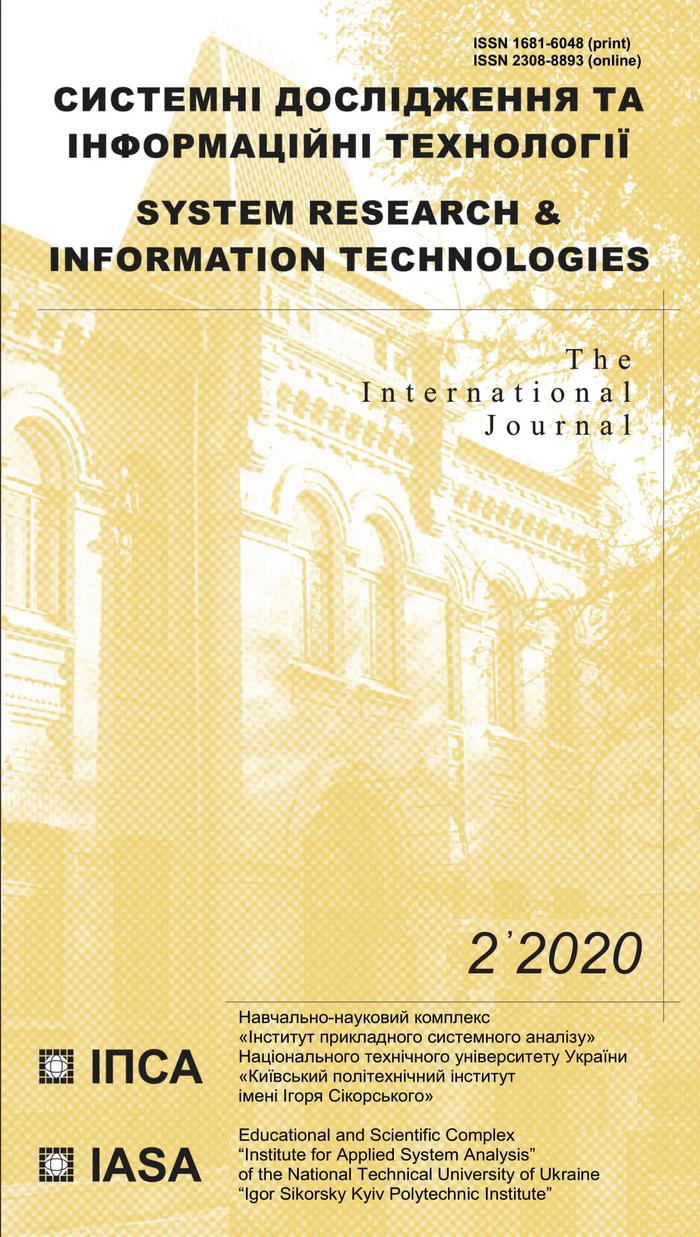Human activity recognition using wearable sensors
DOI:
https://doi.org/10.20535/SRIT.2308-8893.2020.2.03Keywords:
human activity recognition, wear sensors, classification, tracking, display, identification, computer visionAbstract
The article describes systems of human activity recognition (HAR) that uses wearable sensors by the systematization of types of sensors for human activity recognition and methods of data collection. The model for implementation process of HAR is described and each component of the recognition process is thoroughly analyzed. Methods for identifying human activities using different sensors are proposed and their strengths and weaknesses are identified. The process of finding temporary matches between frames is presented in the diagram with a detailed explanation of each transition. Based on the analysis, a combination of both algorithms and methods is proposed, which will increase the HAR system's efficiency as a whole.References
WHO. Demographic trends, statistics and data on ageing. Available: http://www.euro.who.int/en/health-topics/Life-stages/healthy-ageing/data-and-statistics/ demographic-trends,-statistics-and-data-on-ageing.
S.Tal, S.J. Redmond, M.R. Narayan, and N.H. Lovell, Sensors-Based Wearable Systems for Monitoring of Human Movement and Falls. Available: https://ieeexplore.ieee.org/ document/5754557.
A. Godfrey, R. Conway, D. Meagher, and G. ÓLaighin, “Direct mea- surement ofhumanmovement by accelerometry”, Med. Eng. Phys., vol. 30, pp. 1364–1386, 2008.
J. Iglesias, J. Cano, A. M. Bernardos, and J.R. Casar, “A ubiquitous activity-monitor to prevent sedentariness”, in IEEE Conference on Pervasive Computing and Communications, 2011.
Nielsen E. Sanchez, L. Antyn Canalos, and M. Tejera, “Hand Getsure recognition for Human Machine Intercation”, in Proc. 12th International Conference on Computer Graphics, Visualization and Computer Vision : WSCG, 2014, pp. 137–148.
Y. Katsuki, Y. Yamakawa, and M. Ishikawa, “High-speed Human/Robot Hand Interaction System”, in Proceedings of the Tenth Annual ACM/IEEE International Conference on Human-Robot Interaction Extended Abstracts, ACM, 2015, pp. 117–118.
Ke. Shian-Ru, Hoang Le Uyen Thuc, Yong-Jin Lee, Jenq-Neng Hwang, Jang-Hee Yoo, and Kyoung-Ho Choi, “A Review on Video-Based Human Activity Recognition”, in Computers, no. 2(2), pp. 88–131, 2013. Available: https://www.mdpi.com/2073-431x/2/2/88
O.O. Svachka and V.M. Barbaruk, “Research of computer technologies and methods of human gesture recognition for computer control”, Scientific news of Daliv University, 2018, no. 15. Available: http://nbuv.gov.ua/UJRN/Nvdu_2018_15_17
V. Savinova and V. Kolesnikov, “Application of computer vision techniques in the automotive industry”, in Proceedings of the V International Scientific and Technical Internet Conference “Problems and Prospects for the Development of Road Transport”, 13–14 of April 2017, Vinnytsia, pp. 113–120. Available: http://dspace.luguniv.edu.ua /xmlui/handle/123456789/2028.
D.L. Oscar and A. L. Miguel, A Survey on Human Activity Recognition using Wearable Sensors. Available: https://ieeexplore.ieee.org/document/6365160.
I. Khokhlov, L. Reznik, J. Cappos, and R. Bhaskar, Design of Activity Recognition Systems with Wearable Sensors. Available: https://ieeexplore.ieee.org/abstract/ document/8336752.
D. Choujaa and N. Dulay, “Tracme: Temporal activity recognition using mobile phone data”, in IEEE/IFIP International Conference on Embedded and Ubiquitous Computing, vol. 1, pp. 119–126, 2008.
T. Brezmes, J.-L. Gorricho, and J. Cotrina, “Activity recognition from accelerometer data on a mobile phone”, in Distributed Computing, Artificial Intelligence, Bioinformatics, Soft Computing, and Ambient Assisted Living, Springer Berlin / Heidelberg, 2009, vol. 5518, pp. 796–799.
T.-P. Kao, C.-W. Lin, and J.-S. Wang, “Development of a portable activity detector for daily activity recognition”, in IEEE International Symposium on Industrial Electronics, pp. 115–120, 2009.
F. Foerster, M. Smeja, and J. Fahrenberg, “Detection of posture and motion by accelerometry: a validation study in ambulatory monitoring”, Computers in Human Behavior, vol. 15, no. 5, pp. 571–583, 1999.
M. Berchtold, M. Budde, H. Schmidtke, and M. Beigl, “An extensible modular recognition concept that makes activity recognition practical”, in Advances in Artificial Intelligence, Lecture Notes in Computer Science, Springer Berlin / Heidelberg, 2010, pp. 400–409.
S. Reddy, M. Mun, J. Burke, D. Estrin, M. Hansen, and M. Srivastava, “Using mobile phones to determine transportation modes”, ACM Transactions on Sensor Networks, vol. 6, no. 2, pp. 1–27, 2010.
Y.-P. Chen, J.-Y. Yang, S.-N. Liou, Gwo-Yun Lee, and J.-S. Wang, “Online classifier construction algorithm for human activity detection using a triaxial accelerometer,” Applied Mathematics and Computation, vol. 205, no. 2, pp. 849–860, 2008.
J. Parkka, M. Ermes, P. Korpipaa, J. Mantyjarvi, J. Peltola, and I. Korhonen, “Activity classification using realistic data from wearable sensors”, in IEEE Transactions on Information Technology in Biomedicine, vol. 10, no. 1, pp. 119–128, 2006.
L. Bao and S.S. Intille, “Activity recognition from user-annotated acceleration data”, in Pervasive Computing, pp. 1–17, 2004.
J. Cheng, O. Amft, and P. Lukowicz, “Active capacitive sensing: Exploring a new wearable sensing modality for activity recognition”, in Pervasive Computing, Springer Berlin / Heidelberg, 2010, vol. 6030 of Lecture Notes in Computer Science, pp. 319–336.
E.M. Tapia et al., “Real-time recognition of physical activities and their intensities using wireless accelerometers and a heart monitor”, in International Symposium on Wearable Computers, 2007.
H. Zhang, “The Optimality of Naive Bayes”, in FLAIRS Conference, AAAI Press, 2004.
C. Cortes and V. Vapnik, “Support-vector networks”, Machine Learning, vol. 20, pp. 273–297, 1995.
Ian Goodfellow, Yoshua Bengio, and Aaron Courville, Deep Learning, MIT Press, 2016. Available: http://www.deeplearningbook.org.
Antonio Artés Rodríguez, Human Activity Recognition using Inertial Sensors with Invariance to Sensor Orientation. Available: https://www.researchgate.net/publication/ 229597612_Human_Activity_Recognition_using_Inertial_Sensors_with_Invariance_to Sensor_Orientation.
F. Luo, S. Poslad, and E. Bodanese, Temporal convolutional networks for multi-person activity recognition using a 2D LIDAR. Available: https://ieeexplore.ieee.org/document/ 9051989.

